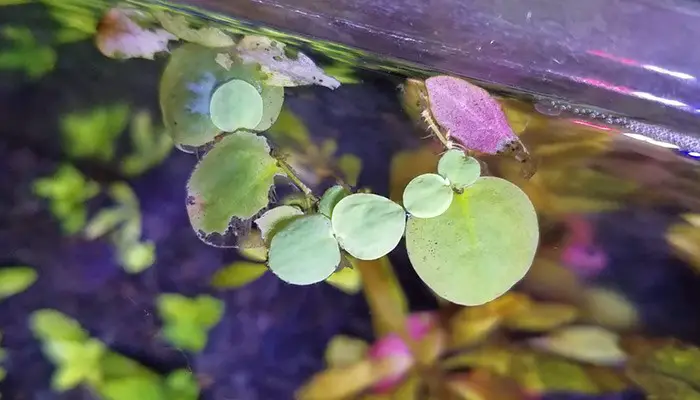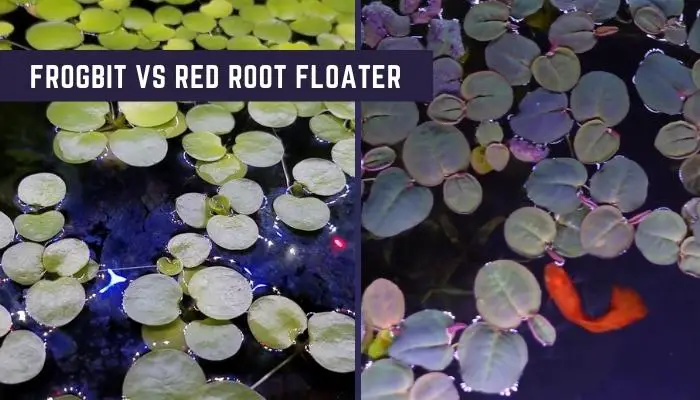
Red root floaters are a very beautiful addition to your aquarium due to their bright red color that enhances the beauty of the tank. And it is a must have for any aquarium enthusiast because not only do they provide additional oxygen to the fish in the aquarium but also work as a natural water filter.
This is because its roots are able to absorb all the excess nutrients and other wastes in the water very efficiently. Moreover, it provides a hiding place for many fishes and shrimps to help in their molting and survival process.
Even though these floaters are very low maintenance, they still need some specific type of care. Anyways the biggest problem is, when the red root floaters start dying it can make quite a mess. And in this case, you have to jump in to save your tank from this mess.
There are 3 major reasons mentioned below that can cause the red root floaters to die–
- Low Light
- Wrong Water Parameters; and
- Too Much Agitation In The Tank
Keep reading through this article because here we are going to talk about all three reasons and how to manage everything like an expert. In addition, there is a complete guide on how to care for the red root floaters at the end of the article.
So without making any delay let’s get down to business–
Why Are My Red Root Floaters Dying

1. Low light
One of the main reasons for the dying red root floaters is, they are not getting enough light in the tank setup. Actually, the thing is, these red floaters need a complete day and night light cycle to keep them alive.
So, whenever your tank goes low on the lights the red floaters start losing their red color and start turning black. Eventually, the floaters look very unhealthy and die.
But when they are in their favorable light condition the floaters will turn back red. And they can even produce small white flowers.
This means you have to make sure to provide them at least 8 hours of light everyday. And the best part about this is, if you increase the intensity of the light, the shade of red color will also increase. In this way, you can turn the pale red floaters to bright red.
If you are wondering what if the high intensity of light harms the fishes and other aquatic plants that cannot tolerate that much light then you can use artificial LED lights. Because these will supply enough light without overheating the tank.
2. Wrong Water Parameters
Like all the other plants, having the right water parameters is very important for the red root floaters. Otherwise, they will die and spoil the whole tank with a foul smell.
However, once you get the water conditions right, they are pretty much very easy to take care of. Anyways, you have to make sure you provide a situation that is similar to their natural habitat. In this case, the pH of the water should be ranging from 6.5 to 7.5.
You see, Red root floaters need a certain temperature which is around 70–80° F (18° to 30°C). If the temperature is too high or too low then it can cause many problems for them.
They also prefer some water hardness around 20-30 dHG. A good thing is they do not require any additional inputs of carbon dioxides.
Another very important thing for them is high levels of nutrients, especially iron. So you have to keep adding iron supplements from time to time. Use a good quality fertilizer that is safe for not only the red root floaters but also for all the other aquatic creatures.
If you notice holes in the red root floater leaves then this means they are potassium deficient. In this case, you have to apply a fertilizer rich in potassium.
3. Too Much Agitation In The Tank
This may surprise you but the red floaters really don’t like to be disturbed at all. Even they don’t prefer the slightest movement in the water before they have established in the tank..Because the water current disturbs their growth cycles and this is why you have to make sure you don’t agitate the water.
If you give them an ambient environment the floaters will grow very fast. And if you need to do some cleaning then be sure to handle the red root floaters gently and keep the water flow at the lowest rate possible since they grow the best when the water is calm.
How to Care For The Red Root Floaters
- They melt very easily under the natural sun because of their heat. So, it’s better if you use artificial LED lights instead.
- Keep the lights turned on for 7-8 hours a day.
- Keep the pH of your tank between 6.5-7.5 and keep maintain this range with the help of an aquarium pH testing kit. (Our Pick: VIVOSUN 3-in-1 Digital pH Meter)
- Apply potassium and iron supplements in the tank from time to time.
- If they overgrow then the floaters will naturally struggle and compete for light and nutrients. This is why you have to remove the excess red root floaters from your tank.
- Never let the tank stay overcrowded because this condition is also not good for the fish and other aquatic plants.
- Prune off the floaters from time to time to keep them under control.
- You can use some barriers or partitions to keep them contained in a certain part of your tank so that they don’t smother off other aquatic plants from light and nutrients.
- The red root floaters grow and expand their branches vigorously. This is why your tank size needs to be a minimum of 5 gallons.
- Use a water temperature stabilizer to keep the temperature between 70–80° F (18° to 30°C) (our pick: Inkbird Heating Thermostat Aquarium)
- You have to consider what kinds of fish to keep because Oscar fish and goldfish love to eat the red root floaters and cause holes in the leaves.
- Also, crayfish and crabs eat and uproot the floaters when they are in the mud of your tank. So, make sure you have the fishes and other aquatic creatures that don’t harm the red root floaters
Frogbit vs. Red Root Floater

The reason we are discussing this is that both the red root floaters and frogbit are very similar in their characteristics. Both are equally grown as aquatic plants. The similarities are–
- They require a very similar environment to grow
- Both are very strong and hardy plants once they have established themselves in the tank.
- They both prefer to be on an undisturbed water surface.
Anyways, they have some dissimilarities too. And in this case, frogbits have the upper hand because–
- Frogbits grow faster than red root floaters.
- The frogbits can tolerate temperature ranges wider than the red root floaters.
- They are more adapted to the lighting conditions.
- Leaves of frogbits are not water repellents, unlike the leaves of red floaters.
To sum up, both the frogbits and red root floaters are excellent additions to your tank. You can even have both of them together in the tank. Because they are beautiful and both grow in quite the same environment.
Frequently Asked Questions (FAQs)
Can You Trim The Roots Of Red Root Floaters?
To keep the tank nice and tidy it’s really important to trim the roots of the red root floaters. Because they grow very fast and vigorously and they can easily get out of control. So trim the roots very carefully once the plant reaches one inch mark.
Does The Red Root Floaters Need CO2?
They can live on the natural CO2 available in the tank. So they don’t really need any additional supplement of CO2. However, they do require additional nitrogen, iron, and potassium after a certain interval to keep up their growth and development.
Why Are My Red Root Floaters Turning Brown?
The most common cause for the red root floaters to turn brown is very bad water quality. These floater plants are very sensitive to water qualities like temperature, pH, nutrients, etc. And they easily change their leaf color when they are stressed due to bad water conditions.
Do Dead Red Root Floater Plants Produce Ammonia?
Like any aquatic plant when the red root floaters die the plant parts rot and produce ammonia and other nitrogen like substances like nitrite. And this can lead to very serious changes in the water quality that can cause the death of other aquatic plants and fishes.
Conclusion
Now that you are all caught up with the information on how to revive a dying red root floater, I am sure you have a complete understanding of the conditions they need to be in.
Maintain the nutrient balance of the tank by regularly monitoring the water and avoid having aquatic creatures that can cause harm to your floaters. And make sure you change the water parameters the way they prefer and wait for the dying floaters to come back to life.
I hope you found this article helpful and if you have any other queries about the red root floaters then ask away in the comment section.
- Top 15 Freshwater Aquarium Plant Ideas for a Lush, Green Tank - November 9, 2024
- Top 13 Freshwater Aquarium Layout Ideas for a Beautifully Organized Tank - November 9, 2024
- 14 Stunning Rustic Freshwater Aquarium Ideas for a Tranquil Environment - November 9, 2024
